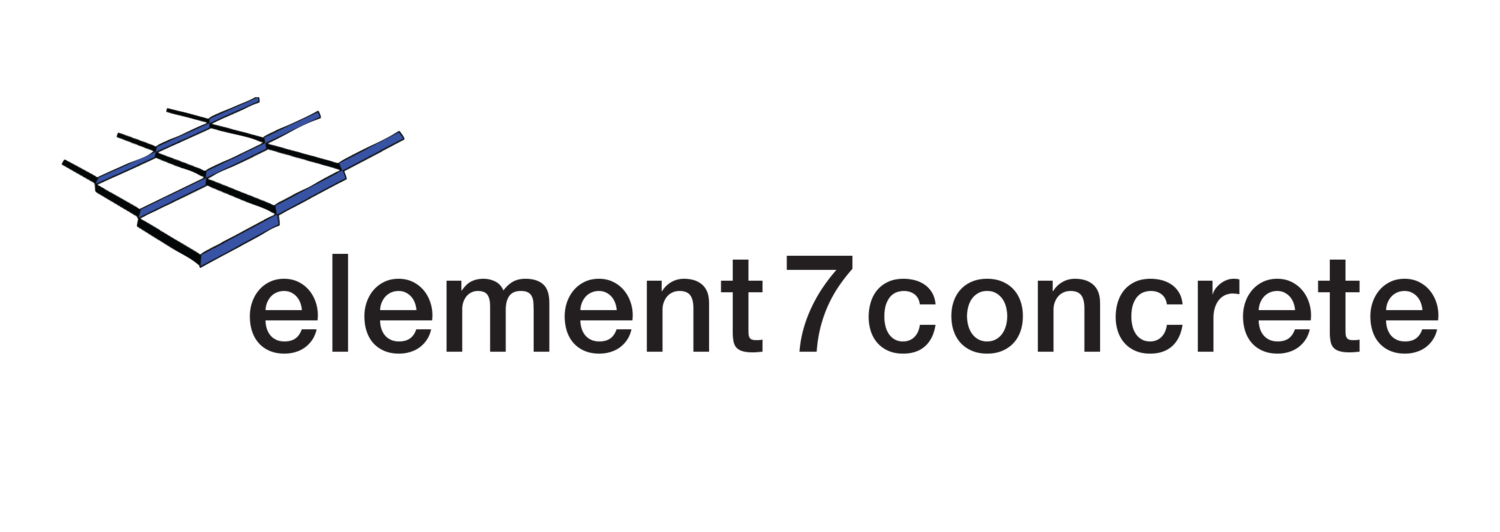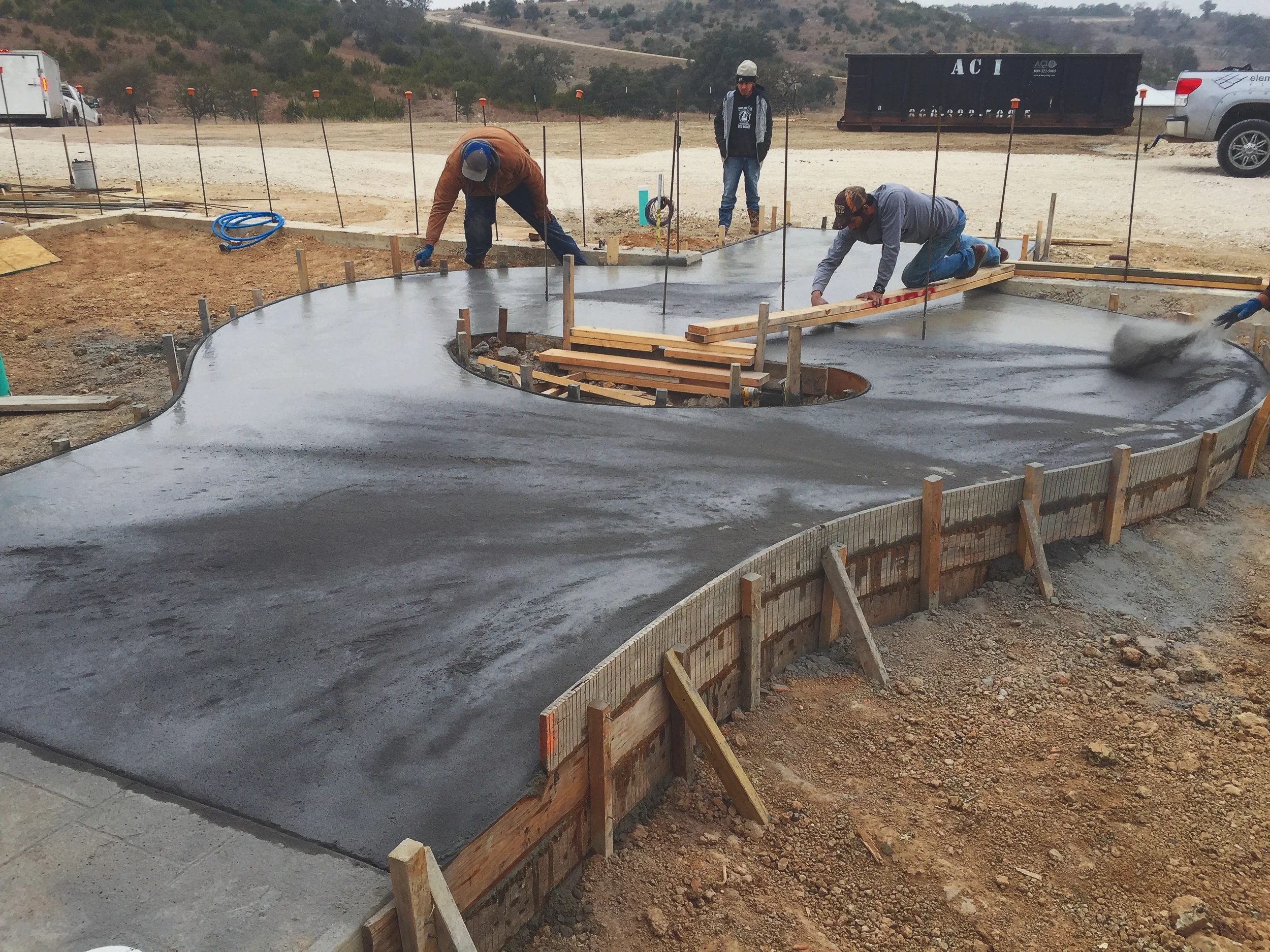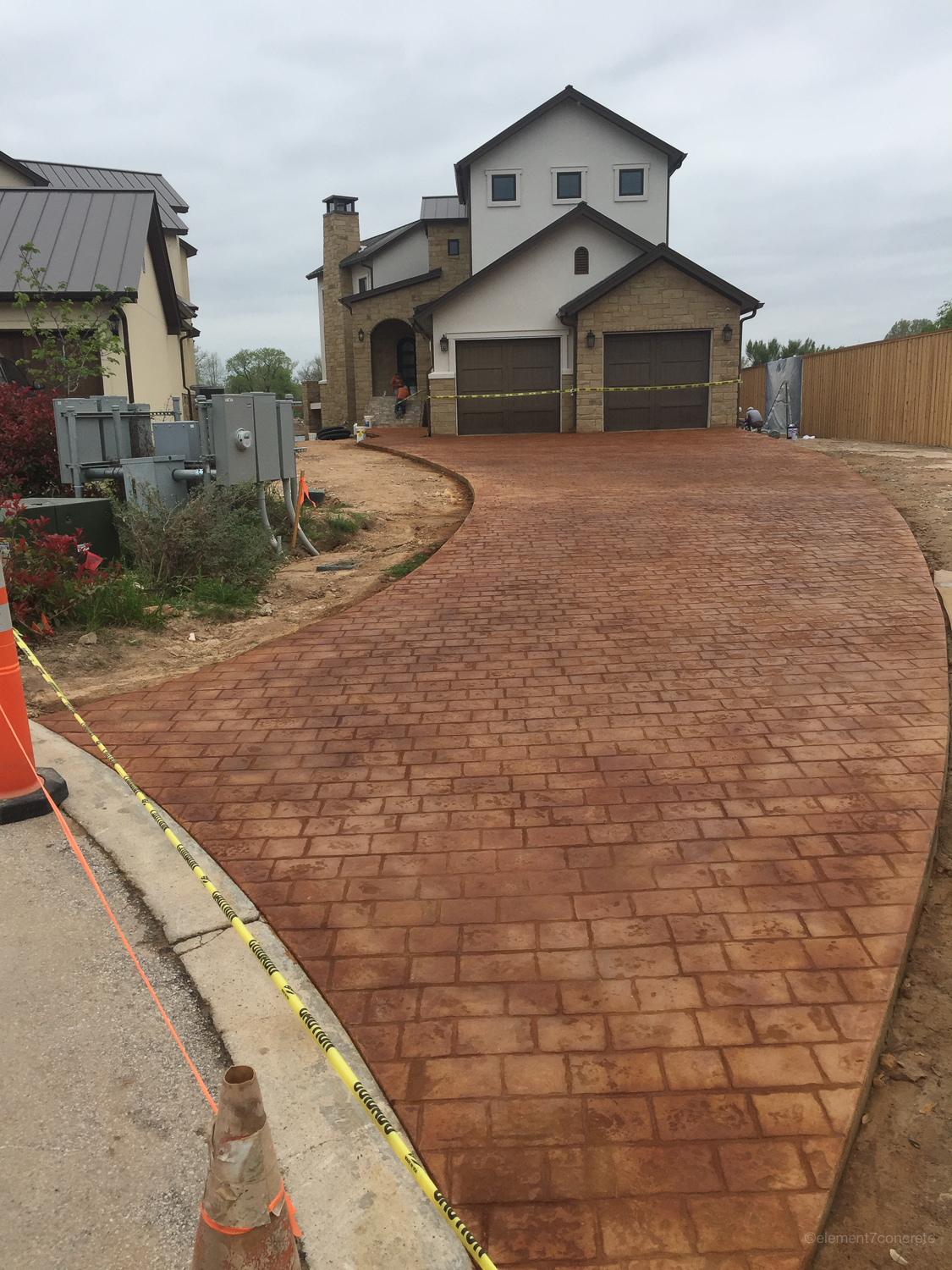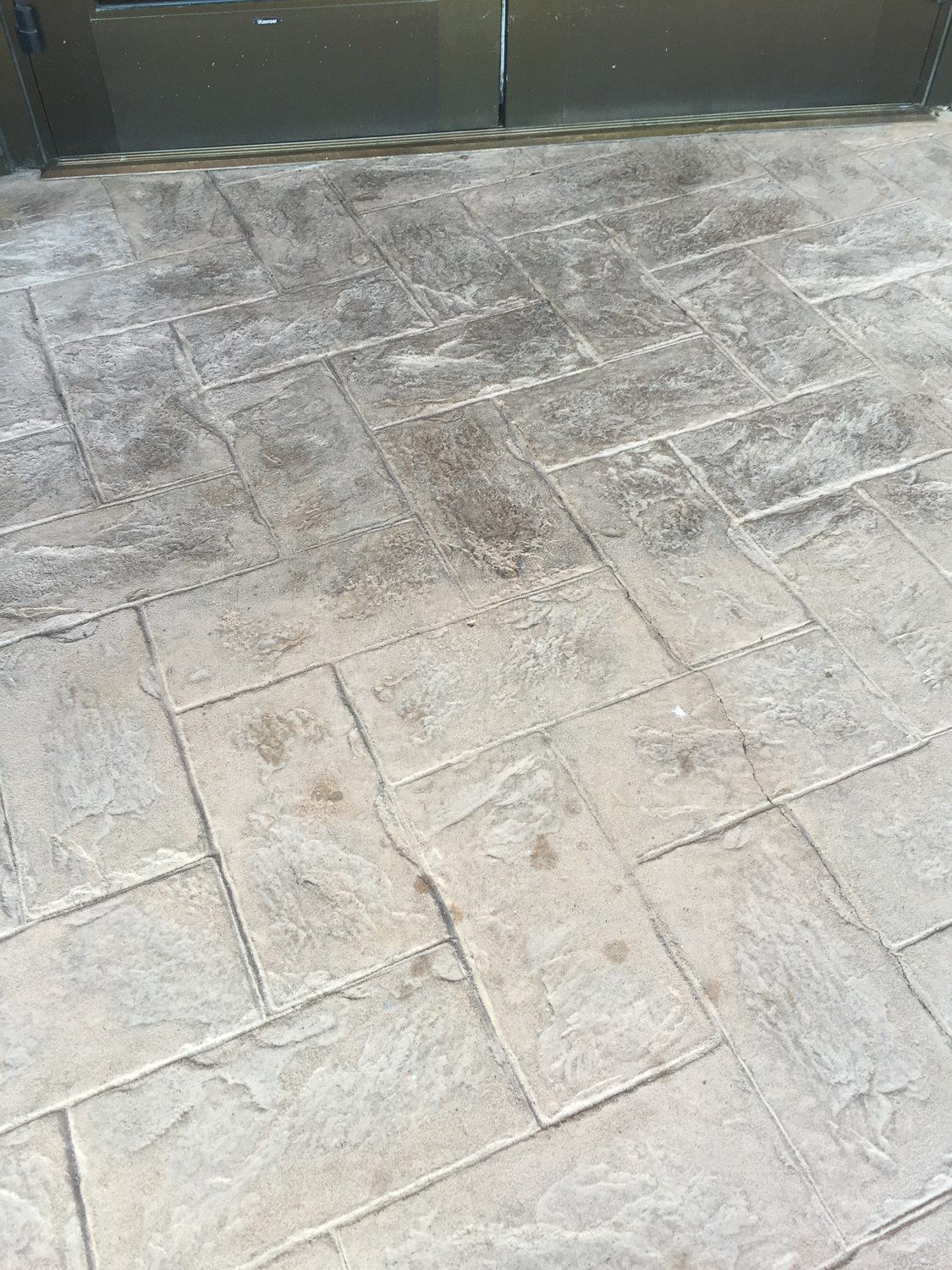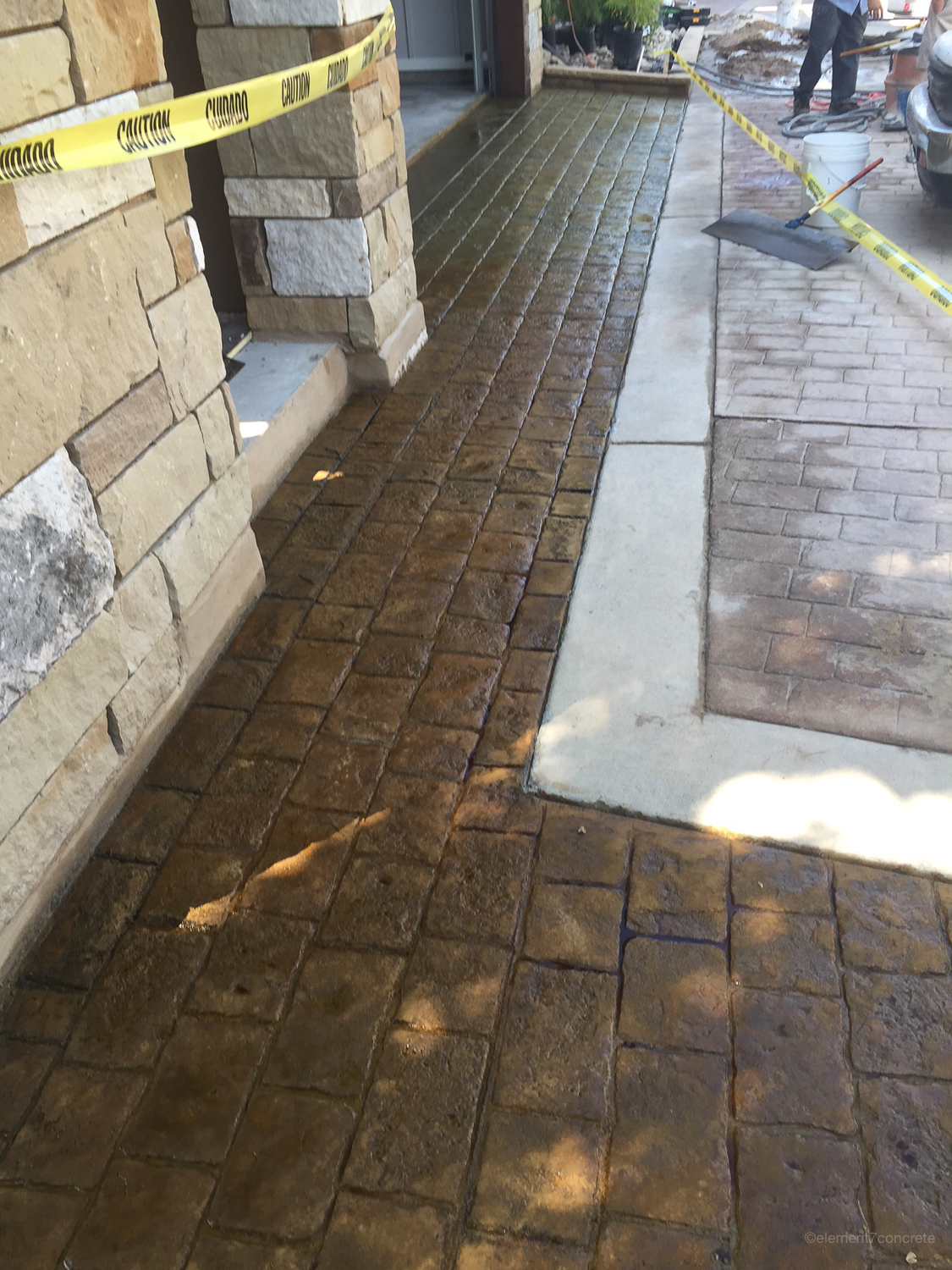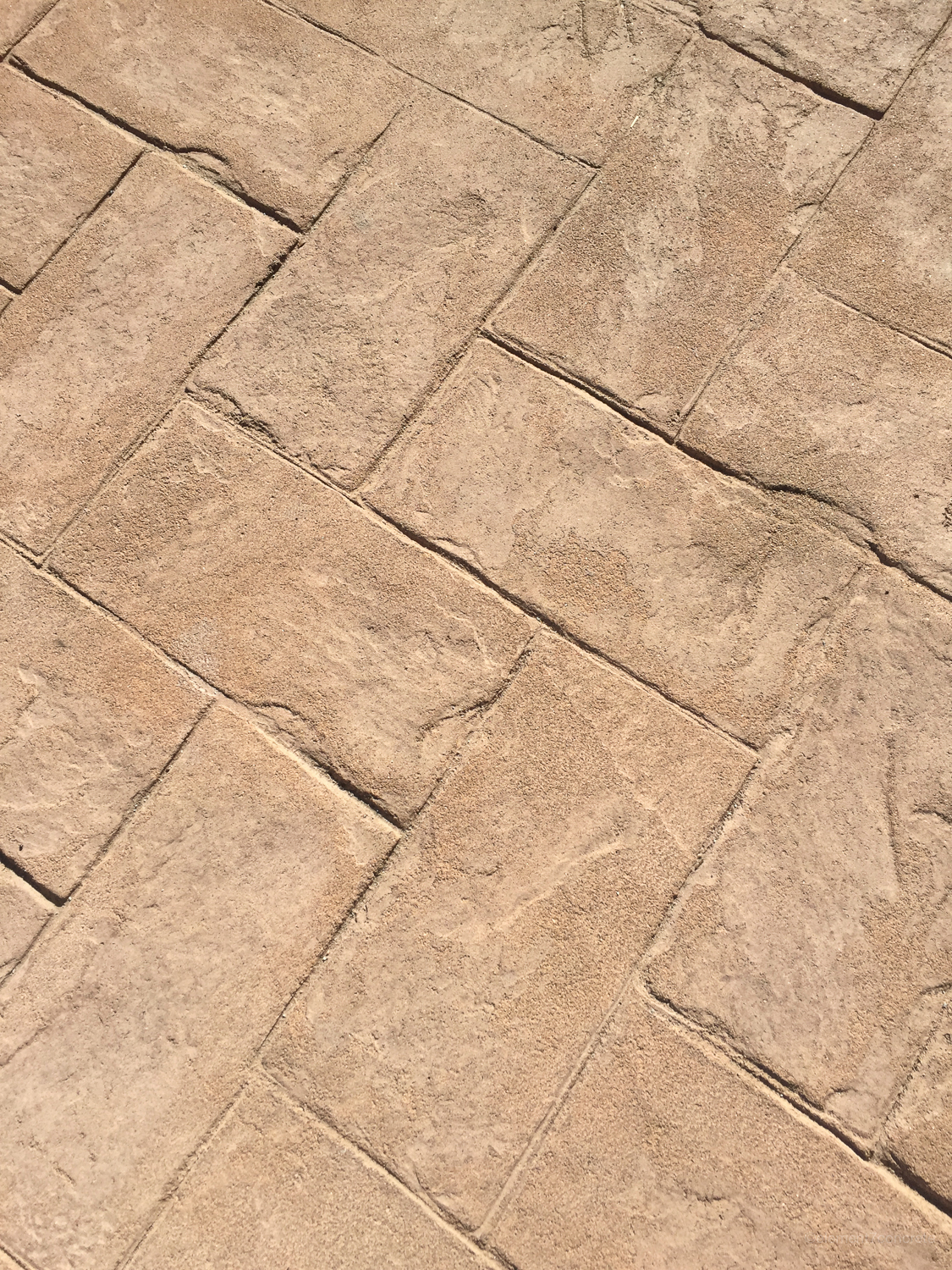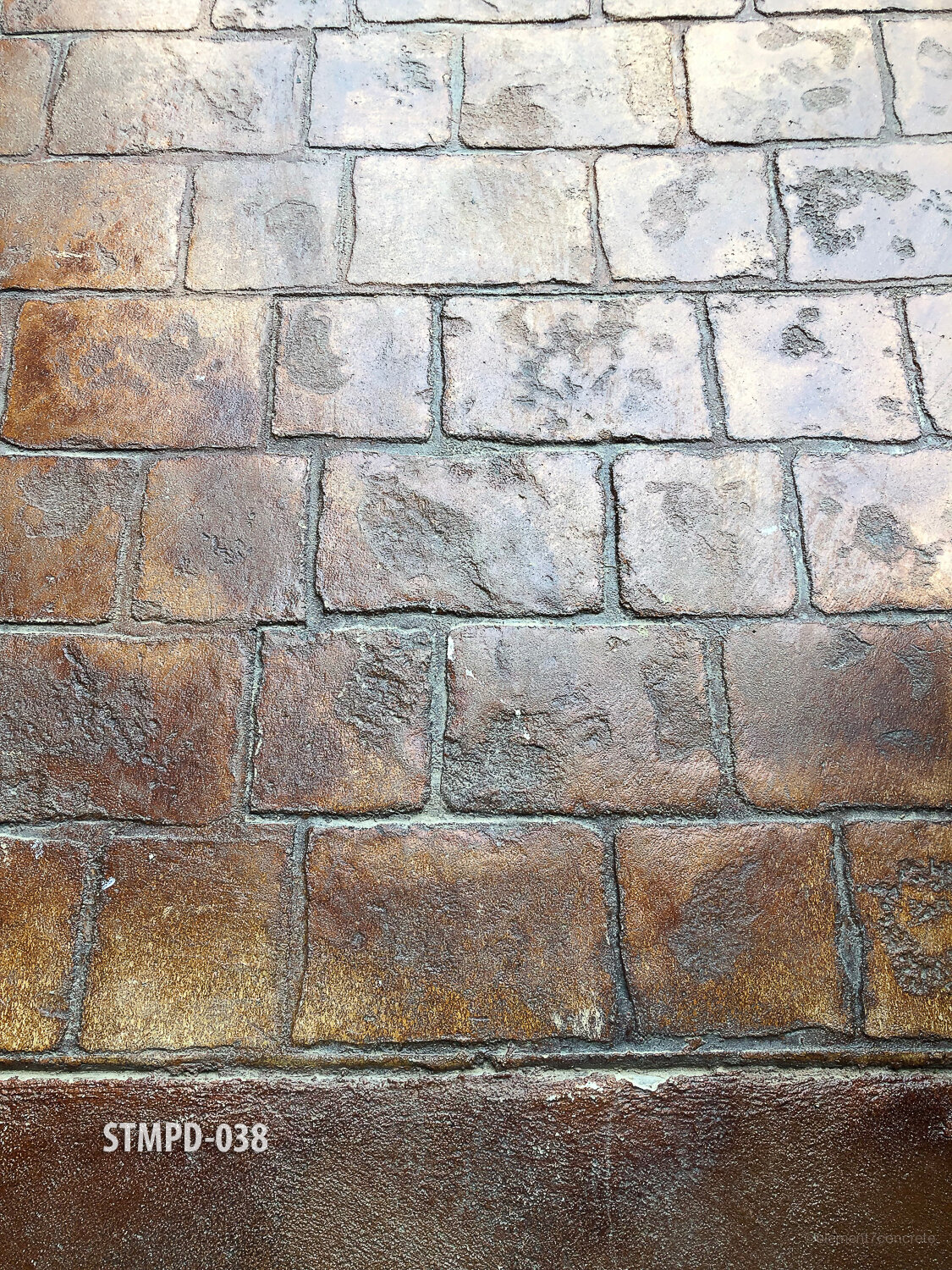Enhanced Concrete Placement
Involving us with a placement team is like pairing great trim carpenters with good framers when building a house. This work needs to be planned before pouring concrete so contact us now by phone at (830)798-2717 or info@element7concrete.com
Concrete Placement can be enhanced with
Integral Color (oxide pigments added to concrete trucks 10 minutes before placement)
Color Hardener (mixture of sand, cement, and pigments allowing for light and very consistent colors)
Texture skin stamping (pressing urethane mats with the texture of slate or granite into concrete before it hardens)
Pattern stamping (pressing urethane mats with the texture of wood planks, flagstone, tile, etc. into concrete before it hardens)
Antiquing stain (imparting an accent color while stamping)
How we started enhancing placement projects: Success built on failure.
We were called in to overlay several projects that were not well stamped by the placement team. The problem is (dirty little secret) none of the overlay materials are as hard or age as gracefully as proper concrete. So, when builders would ask us to bid overlay jobs on new construction (trusting the placement contractor with the dirt-work, grading, slope, and us with the aesthetic details), we asked if we could save them the material cost and just stamp the fresh concrete. This worked great: right when the placement team was exhausted, our team would come off the proverbial sidelines and nail the details.
To achieve a more modern, steely grey, we use integral color. Integral color is ideal for efficiently creating medium grey to black concrete. Integral color is appropriate when you want to grind and polish the concrete.
Integral Color Myths
Integral color is cheaper than staining.
False: it's the same or a bit more
Integral color makes it so if you chip the concrete it's the same color.
False: texture and aggregate affects color materially - it will be lighter and rocky if you chip it.
Integral color is more consistent than staining.
False: maintaining consistency from truck to truck is very hard. Use Color Hardener for maximum consistency.
Integral color is pigment added to an entire batch of wet concrete: using it correctly requires some math and careful measuring.
Color Hardener
Color Hardener makes it possible to create surfaces lighter than normal concrete.
Photo courtesy of Butterfield Color, Inc.
The images above and at left depicts color hardener being broadcast and troweled in to the wet concrete.
With color hardener it is possible to make surfaces lighter than normal concrete. There is no white integral color that could overcome the color from the sand and rocks of the concrete. Additionally, it will even out the color of multiple pours, as you seen below in the photos of this 20,000 s/ft driveway.
White Color Hardener with Black dye
In the photos below we used a dry-shake color hardener in Nantucket White and then amid the polishing process we used a light loading of Black Surelock Dye from Ameripolish. The movement and variegation makes for a great finished floor.
Color Options
What’s exciting about color hardener is that there are so many colors to choose from. One of the colors in the chart below is sure to combine well with other design choices in your home. Depending on your style you could pick just about any color to fit with your personal tastes.
Texture Skin Stamping + Scored
Texture skins are 4’ square mats created by casting urethane against granite, slate, bluestone, or quartzite. The mats take on the texture of the stone, and then are used to impart that texture in concrete before it hardens.
We love texture skin stamping and scoring because it is honest. Rather than mimic flagstone, we think it is better to be inspired by the texture of flagstone, but make something that is world-class decorative concrete rather than imitation anything.
Pattern Stamping
These stamps mimic pavers, cobblestone, brick, slate, flagstone, tile, wood and more.
Click below to see patterns available.
Antiquing Stain
For Textured Stained Concrete
Antiquing Stain enhances texture and gives a secondary color, especially in the low spots of stamped concrete.
Acrylic Sealer
Sealing with an acrylic sealer helps protect concrete from dusting, tire-marks, and stains. Most decorative concrete finishes don’t look great until they are sealed. Sealer wears out over time: expect to re-apply every 5 years or so.
